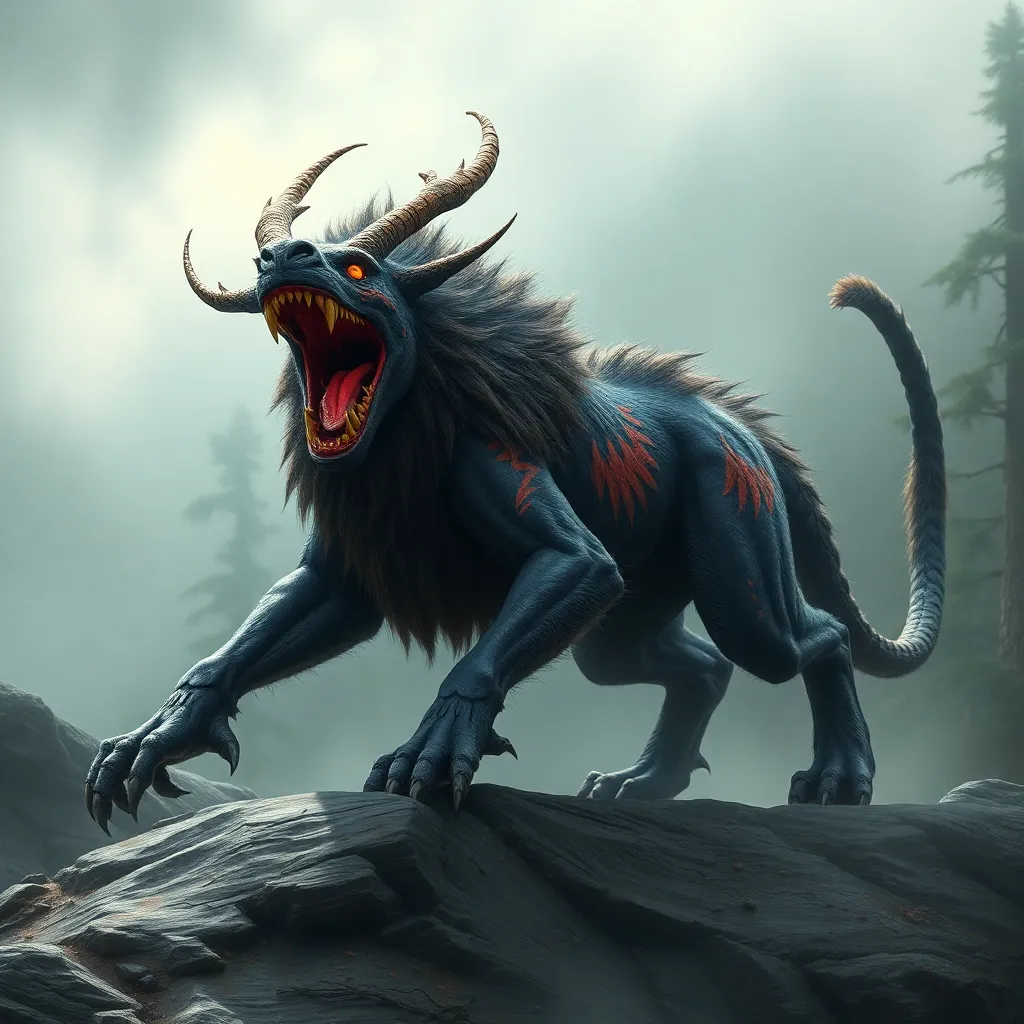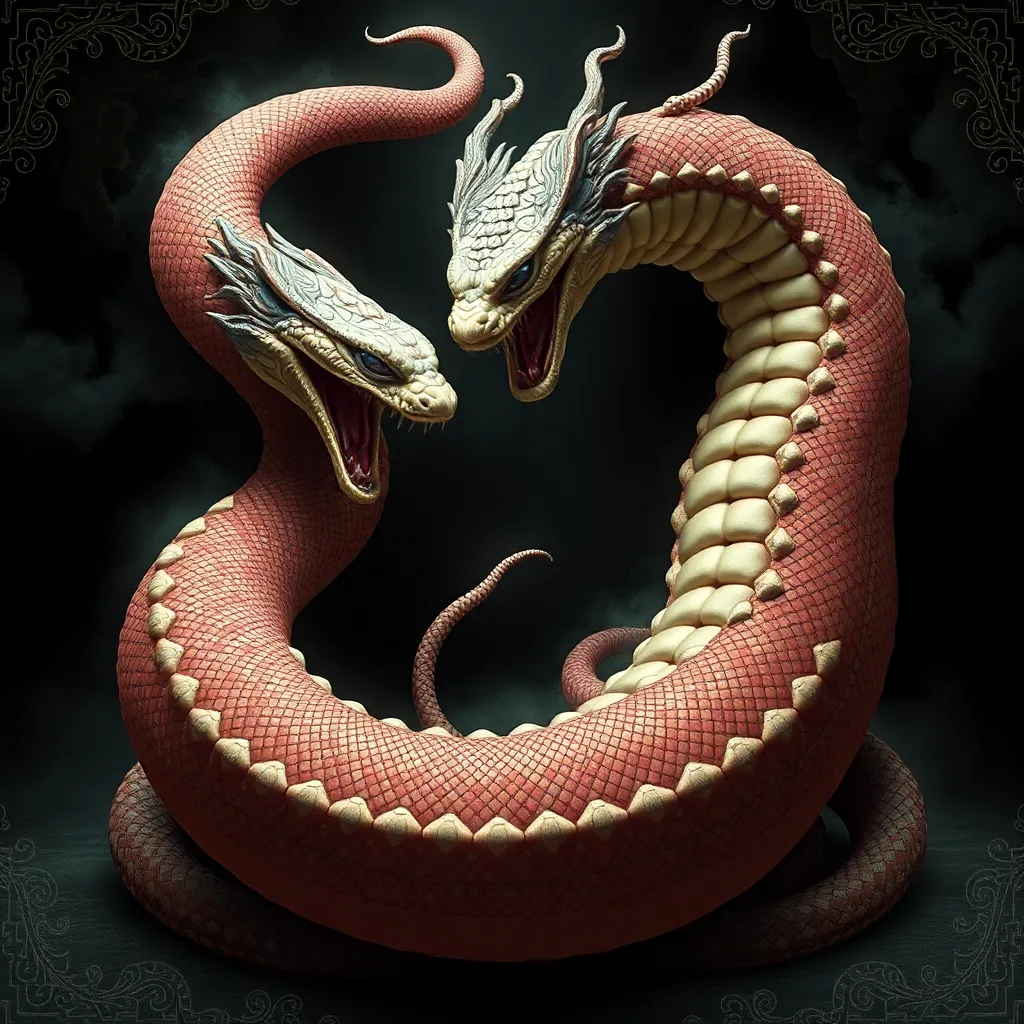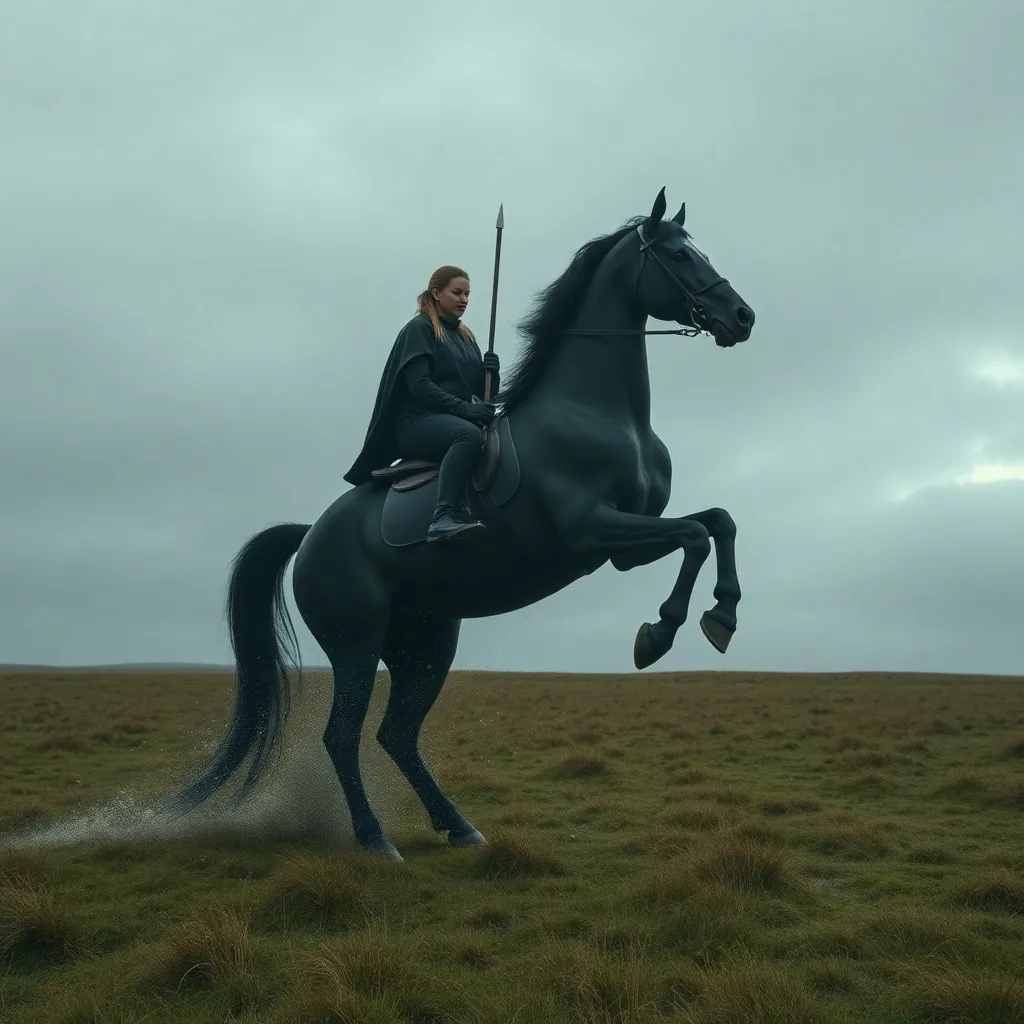The Manticore in North American Mythology: A Beast of the Native American Legends
I. Introduction
The Manticore is a legendary creature that has captivated the imagination of many cultures throughout history. Often described as a hybrid creature with the body of a lion, the head of a human, and a scorpion’s tail, the Manticore embodies a unique blend of characteristics that make it a fascinating figure in mythology.
In various mythological contexts, the Manticore has held significant meaning, often representing danger, chaos, and the unknown. This article aims to explore the origins, characteristics, and cultural significance of the Manticore within the framework of Native American mythology, shedding light on its role in indigenous narratives.
II. The Origins of the Manticore Legend
A. Historical context of the Manticore in ancient cultures
The Manticore has its roots in ancient Persian mythology, where it was first documented in texts dating back to the 5th century BCE. The term “Manticore” is derived from the Persian word “mardkhora,” which means “man-eater.” This creature was often depicted as a fearsome predator, symbolizing the dangers that lurked in the wild.
B. How the Manticore myth transitioned to North American folklore
As European settlers arrived in North America, they brought with them various mythologies, including that of the Manticore. The blending of these European myths with Native American stories resulted in a unique cultural exchange, which allowed the Manticore to evolve within indigenous narratives.
C. Influence of European settlers on Native American stories
The arrival of European settlers had a profound impact on Native American mythology. The Manticore, as a symbol of fear and danger, found its place among the diverse tapestry of Native American legends, often adapted to reflect the local culture and environment.
III. Physical Description and Characteristics
A. Traditional descriptions of the Manticore
Traditionally, the Manticore is described as a fearsome creature with the following characteristics:
- Body of a lion
- Human head with sharp teeth and a fierce expression
- Scorpion tail that can shoot venomous spines
B. Variations in depictions among different tribes
Different Native American tribes have depicted the Manticore in various ways. For instance:
- Some tribes portray it more as a trickster figure, emphasizing its cunning and deceptive nature.
- Others focus on its terrifying aspects, presenting it as a creature to be feared, embodying the chaos of nature.
C. Symbolism of its features (lion’s body, human head, scorpion tail)
The features of the Manticore carry deep symbolism in Native American culture:
- The lion’s body symbolizes strength and bravery.
- The human head represents intelligence and the capacity for cunning.
- The scorpion tail signifies danger and the potential for harm.
IV. The Manticore in Native American Legends
A. Notable tribes with Manticore stories
Several tribes have incorporated the Manticore into their folklore, each with unique narratives. Notable tribes include:
- The Lakota Sioux
- The Navajo
- The Iroquois
B. Key legends and tales featuring the Manticore
One of the most famous legends comes from the Lakota Sioux, where the Manticore is depicted as a guardian of the underworld, testing the bravery of those who seek to cross its path. Similarly, the Navajo tell tales of a Manticore creature that protects sacred lands from intruders.
C. Interpretation of the Manticore within tribal contexts
Within tribal contexts, the Manticore serves as a multifaceted symbol, often representing:
- The balance between nature and humanity.
- The consequences of disrupting natural order.
- A reflection of internal fears and societal dangers.
V. The Manticore as a Symbol
A. Representation of danger and chaos
The Manticore is primarily viewed as a representation of danger and chaos, embodying the fears that humans have about the natural world. It serves as a reminder of the unpredictability of life and the importance of respecting nature.
B. The Manticore as a lesson in morality or caution
In many stories, the Manticore teaches lessons about caution and the consequences of human actions. By confronting this creature, characters in the legends often must face their own fears and moral dilemmas.
C. Connections to broader themes in Native American mythology
The Manticore connects to broader themes in Native American mythology, including:
- The relationship between humans and nature.
- Respect for the environment and its creatures.
- The moral lessons embedded within the stories of legendary beings.
VI. Comparisons with Other Mythical Creatures
A. Similarities and differences with the Manticore in other cultures
Comparing the Manticore with similar creatures in other cultures reveals both similarities and differences. For instance, the Chimera from Greek mythology shares the hybrid nature of the Manticore, but its symbolism and narratives differ significantly.
B. The Manticore alongside other North American mythical beings
In North American folklore, the Manticore can be compared to other mythical beings such as:
- The Wendigo – a spirit representing famine and greed.
- The Skinwalker – a shapeshifter with malevolent intentions.
C. Cross-cultural influences and adaptations
The Manticore’s evolution illustrates cross-cultural influences, as stories from European settlers merged with indigenous beliefs, leading to adaptations that reflect the complexities of both cultures.
VII. Modern Interpretations and Cultural Impact
A. The Manticore in contemporary literature and media
In modern literature and media, the Manticore has made appearances in various forms, from fantasy novels to films. These portrayals often emphasize its fearsome nature and otherworldly characteristics, helping to keep the legend alive.
B. Artistic representations in modern Native American culture
Artists within Native American communities have also begun incorporating the Manticore into their works, using it as a symbol to express cultural identity and the importance of preserving traditional stories.
C. The role of the Manticore in discussions of mythology and identity
The Manticore serves as a focal point in discussions about mythology and identity, representing the blending of cultures and the significance of storytelling in understanding one’s heritage.
VIII. Conclusion
A. Summary of the Manticore’s significance in North American mythology
Throughout North American mythology, the Manticore stands as a significant figure, embodying themes of danger, morality, and the complexities of human-nature relationships.
B. The enduring legacy of the Manticore in cultural narratives
The legacy of the Manticore continues to influence contemporary narratives, reminding us of the rich tapestry of stories that shape cultural identities.
C. Final thoughts on the importance of preserving indigenous legends
Preserving indigenous legends such as that of the Manticore is crucial for understanding the cultural heritage of Native Americans. These stories not only offer insights into their beliefs and values but also foster a deeper appreciation for the interconnectedness of all life.




